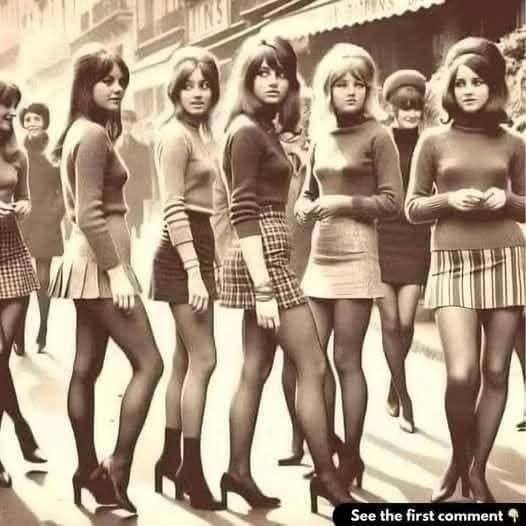The Photograph That Changed How We Dress
At first glance, it’s just a faded image from the 1970s—soft colors, flared pants, sunlight glinting off aviator glasses—but look closer and you can feel the pulse of a revolution. This single photograph captures a decade that broke every fashion rule written before it. Gone were the stiff silhouettes and quiet conformity of earlier eras. In their place rose a glorious chaos: disco shimmer beside bohemian ease, rebellion stitched right into the seams. It was the moment fashion stopped dictating and started listening—to the streets, to music, to freedom.
The woman in the picture embodies it all. In one frame she’s effortless and wild, her flowing sleeves and chunky jewelry defying old notions of “proper.” Yet behind her eyes, you sense the shift happening—a new confidence, a refusal to fit neatly into anyone’s box. This was the decade when people dared to mix contradictions, where a peasant blouse could meet a gold lamé belt and somehow make sense. It was no longer about fitting in. It was about showing up as yourself, unfiltered and alive
Denim became more than fabric; it was identity. Polyester, mocked for its cheapness, suddenly shimmered with possibility. Tailored blazers shared closets with tie-dye shirts. The 1970s took fashion off the runway and handed it to the people, saying, “Here—make it yours.” The boundaries between gender, class, and occasion blurred in a way the world hadn’t seen before. Each outfit told a story not of wealth or status, but of taste, attitude, and freedom.
Today, when influencers mix vintage thrift with luxury brands or when someone wears sneakers to a gala without apology, they’re echoing that same photograph’s message. Style is not a cage—it’s a canvas. That vintage image doesn’t just remind us of what people wore; it reminds us of why they dressed the way they did. It’s the portrait of a turning point, when fashion finally stopped asking for permission and started celebrating possibility.
